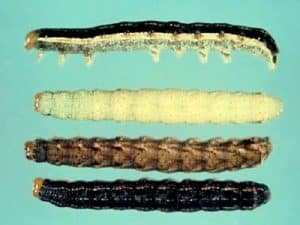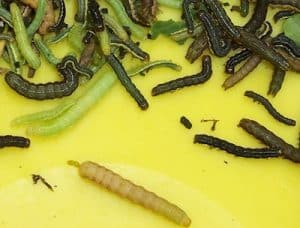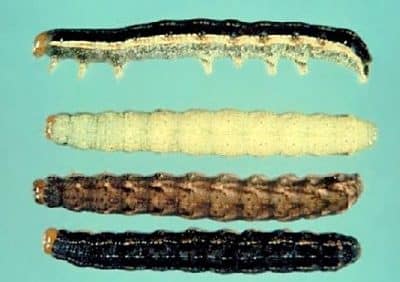Bertha armyworm adult moth counts were generally low across the Prairies in 2017. A few trap sites did enter the moderate risk level, but none was high. See provincial counts in the Prairie Pest Monitoring Network blog. However, as experienced with diamondback moth trap counts this year, egg survival could be higher in dry conditions and warm weather will promote rapid growth.
So…keep an eye out just in case. Bertha larvae often aren’t noticed until they move up the canopy during mid to late podding – at which point yield loss can occur quickly. They can be found lower in the canopy before that time, feeding on lower leaves. Assessing your crop early for telltale signs of leaf feeding will give farmers time to accurately assess the risk and apply a timely insecticide, if needed.


Scouting tips
—Go out in early morning or late evening when larvae are mostly active.
—Mark out an area a quarter-metre square (50 cm by 50 cm) and beat the plants growing within that area to dislodge the larvae. Count the larvae that have fallen to the ground and multiply by 4 to get the number per metre square. Larvae will hide under leaf litter and in cracks, so check closely.
—Sample at least 5 locations (10-15 is recommended) a minimum of 50 metres apart. Do not sample headlands and areas within the crop that are not representative of the field. Use the average number of larvae at the sites surveyed to determine if the economic threshold has been exceeded.
—Scout each field. Adjacent fields may have very different larval densities, depending on how attractive the crop was when the moths were laying their eggs. Adjacent fields may also have different-sized larvae, depending on when the eggs were laid.
—For best results, apply an insecticide as soon as economic thresholds are reached. A single well-timed application of any registered insecticide is usually effective. Check provincial crop protection guides for registered insecticides and pre-harvest intervals to prevent issues with MRLs (maximum residue limits).
—Apply insecticides early in the morning or late evening when the larvae are actively feeding. Do not apply during warm afternoons.

